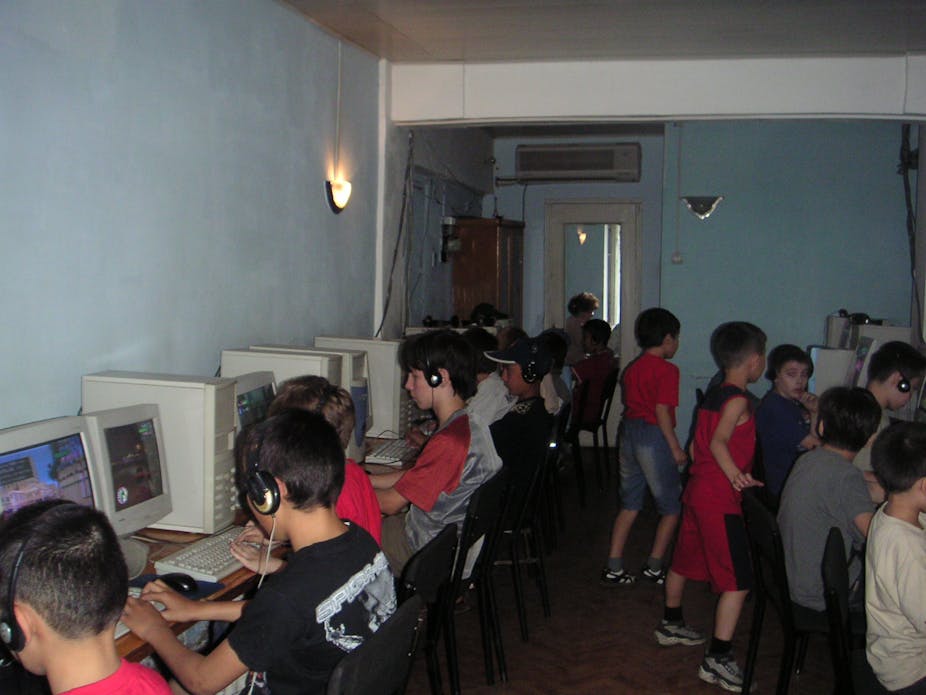The growth of online gaming has spawned a new kind of addiction and it’s time the industry woke up to its responsibilities.
Since the first videogame was launched in 1972, the gaming industry has become a fast moving, multi-billion-dollar industry and now plays a central role in entertainment culture, cutting across most age groups as well as gender.
According to a report by Forbes, the global videogame industry is predicted to grow from $67 billion in 2012 to $82 billion by 2017, surpassing sales in the film industry. Since 2007, videogames have consistently beaten Hollywood blockbuster movies in first-week sales revenue. After the USA and Japan, the UK videogames market is the third largest in the world. In 2010, 63 million console and PC games were sold in the UK; games with violent content were among the most popular.
The anonymous environment of multiplayer, online role playing games such as World of Warcraft, allows gamers to experiment with different parts of their personalities and identities, and to immerse themselves in new social identities. While conventional videogames on consoles have an ending, or may become boring and repetitive, these games are an inexhaustible system of goals and successes in which the character becomes stronger and richer by moving to new levels while accumulating treasures, power and weaponry. The influence of multiplayer games today can be compared to the influence of music, religion, and politics in previous decades.
In recent years, the problems associated with the use of online videogames have received increased attention not only from the media, but also from psychologists, psychiatrists, mental health organisations and gamers themselves. Evidence suggests that somewhere between around 7% and 11% of gamers seem to be having real problems to the point that they are considered pathological gamers.
While it may be difficult to distinguish between a healthy and unhealthy usage of online videogames, there is sufficient evidence to describe some excessive gaming as problematic or addictive when it pervades and disrupts other aspects of life.
Along with Zaheer Hussain and Mark Griffiths, I propose a three-step strategy that the gaming industry might adopt to address the problem of addiction among its customers. This combines gamer-care policies, referral services and, most crucially, good game design.
Warning signs
Comparable with the cautionary health messages on tobacco and alcohol packaging, warning messages about risk of overuse have recently started to appear on the loading screens of popular multiplayer games.
This would suggest that videogame producers do recognise that their products have addictive features and admit a degree of responsibility in the problem of over-use, even if they won’t openly admit to holding information about how high the percentage of over-users is, how much time gamers spend playing and what specific features make a particular game more engrossing and addictive than others. To a certain extent, the introduction of warning messages marks a first step towards establishing gamer-care policies. But one-off reminders like these are not enough.
Responsible design
Thinking about addiction at the design stage would be a far more significant move. Online videogame developers and publishers need to look into the structural features of their games during the design process, including the character development, rapid absorption rate and multi-player features that make them addictive in the first place.
Many multiplayer games make use of variable ratio reinforcement schedules, meaning that results such as finding objects that help you progress are not predictable. This provides a more intense experience than console games, where the same action will produce the same result every time the game is played, and increases the addictiveness of the virtual world. Even if these potentially addictive design features might not be intended, developers have an obligation to consider ways of limiting harm. One way of doing this could be to add time limits, since many gamers schedule and plan according to their in-game schedules.
So long quests could be shortened, the amount of experience points needed to reach the next level could be lowered and spawns - the points at which gamers leave or enter a game - could be timed to appear more frequently to give gamers increased chances of receiving specifically wanted items, meaning they can leave the game much earlier.
Reaching out
Finally, online videogame publishers should make provision for suitable referral services. Companies can potentially identify extreme gamers from their databases and offer them contact information for organisations that can help. It is not the gaming industry’s responsibility to treat gaming addicts but it should play a part in guiding them towards agencies that know how to treat them.
In China, the government has already taken steps to counteract the potentially problematic effects of game play by limiting usage. If videogame companies refuse to act, Western governments may have no choice but to do the same. The proportion of gamers who develop problems or become addicts may stay roughly constant but as online videogames get better and better, and increasing numbers of people discover them, the number of addicts is likely to rise.
In the gambling industry, corporate social responsibility is now a necessary part of doing business because of pressure from the authorities. But the online videogame industry has, by and large, escaped government intervention. If it wants to continue to do so, it would be wise to start thinking about socially responsible standards.

